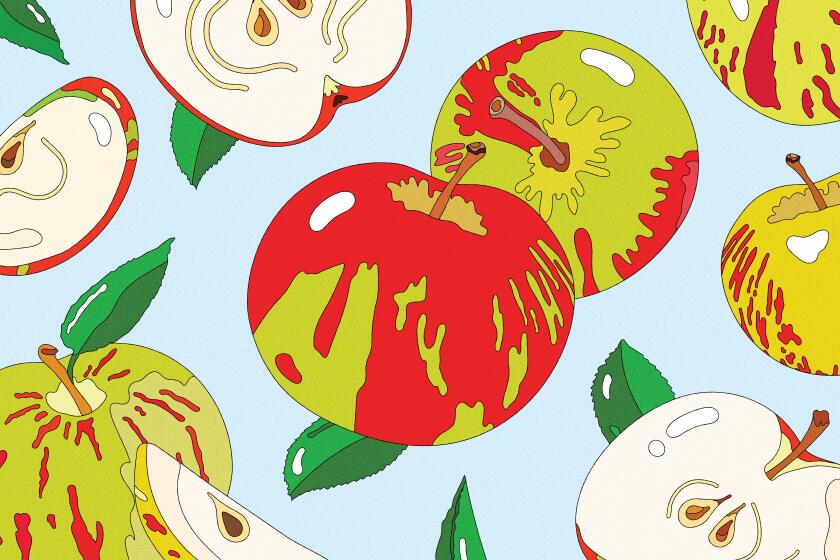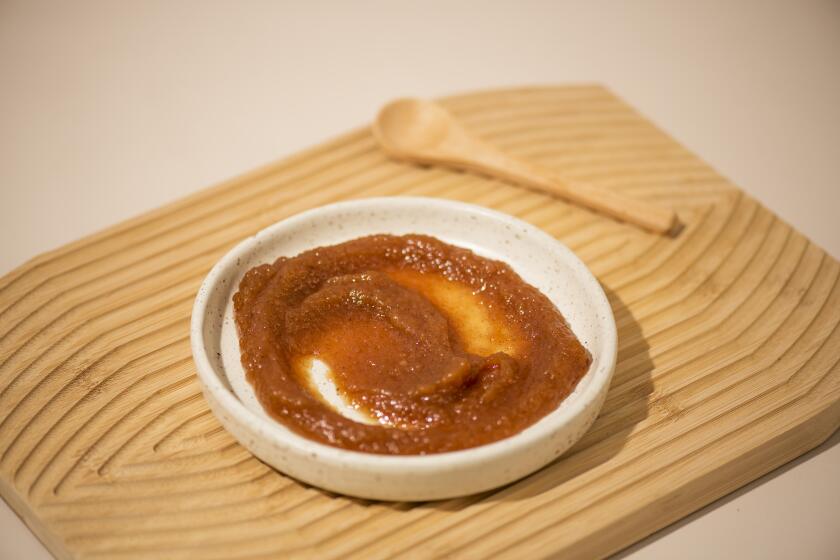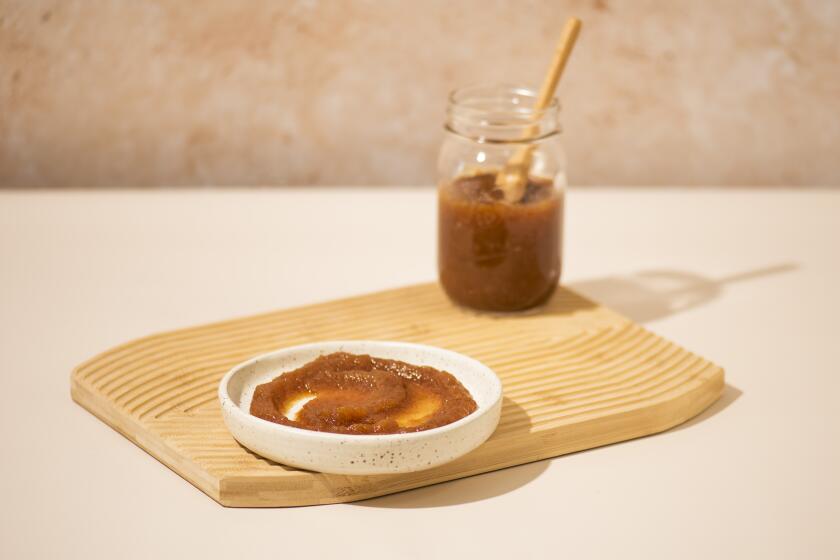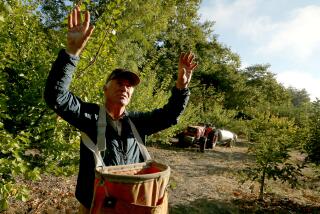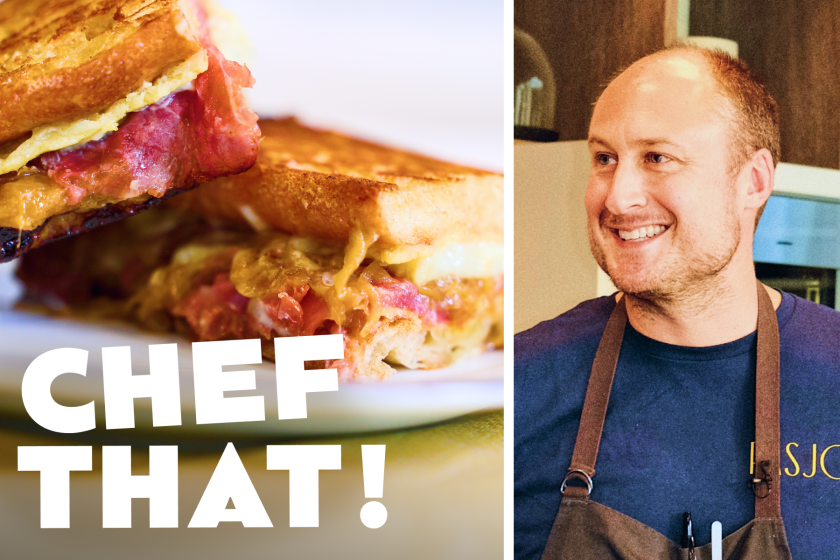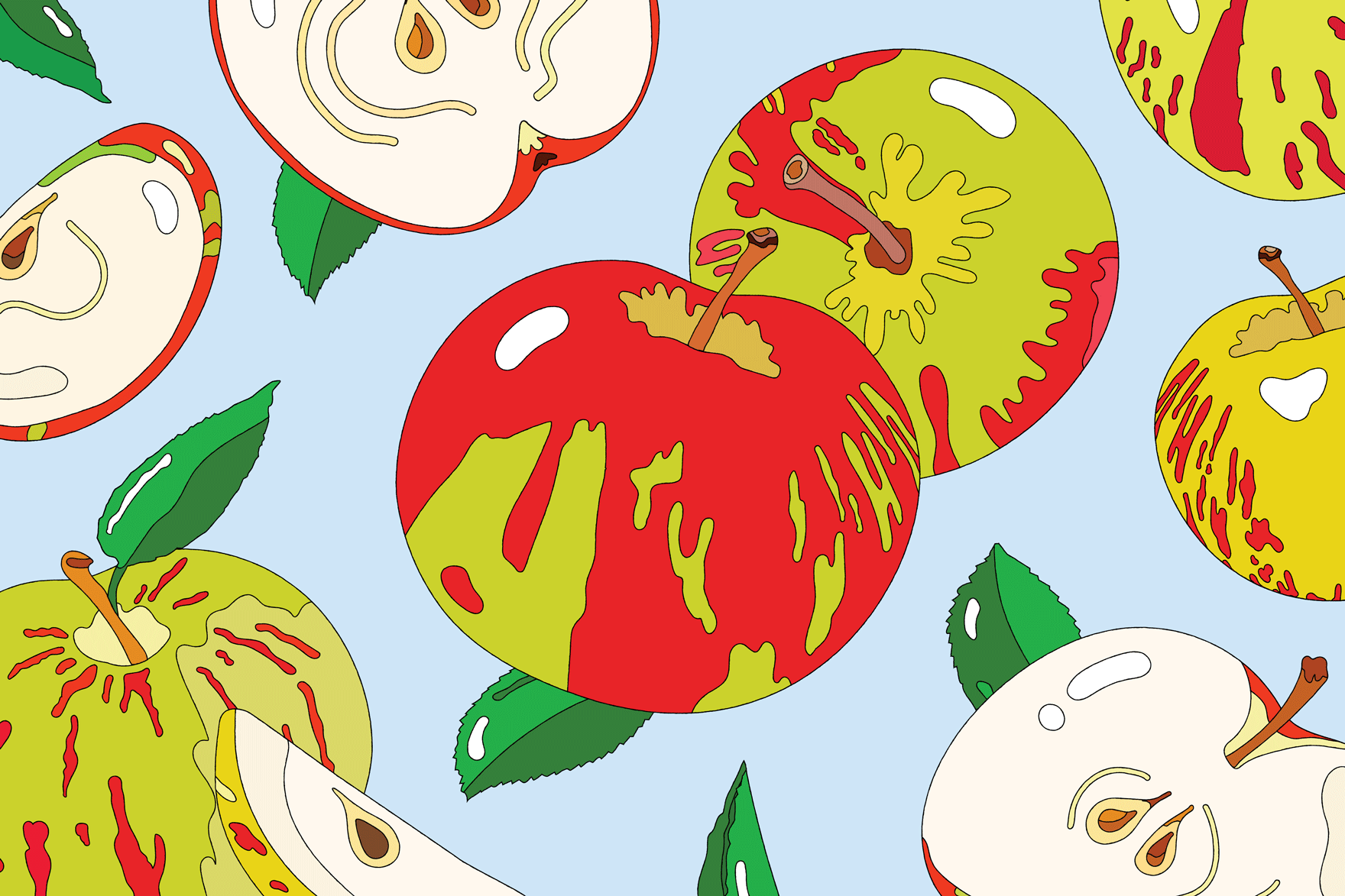
This is the second in a four-part series on preserving fruit at home called “L.A. in a Jar.” Cooking columnist Ben Mims follows up stone fruit jam with his take on autumnal apple butter.
Before there was Big Pumpkin Spice®, there was apple butter. It’s the food of fall — the original floral and lightly spiced sweet flavor that brings to mind visions of cozy sweaters, crisp autumn air and the beginning of the holiday season. Basically just puréed apples cooked with sugar into a preserve, it’s smooth and luscious and contains everything there is to love about this time of year in a spoon. You can also make it with pears and quince, but I prefer the classic apples.
And while the East Coast may have a stronghold on the vibe of apple picking season — the cider doughnuts, changing foliage and apple butter on everything — California has the best apples in the country with which to make it.
“The classic California apple for making apple butter is Gravenstein,” said David Karp, a pomologist and longtime L.A. Times contributor. “It originated in Denmark and was grown on thousands of acres in Sonoma County in decades past but survives in much smaller quantities today. It’s hard to find in Southern California, but it is worth traveling to Sebastopol in August, ordering by mail or making a special trip to the Mar Vista Farmers Market in early August to get them.”
The Gravenstein apple orchards of Northern California have, in recent decades, been abandoned to make way for vineyards, contributing to their rarity — not because they don’t taste the best, but because they’re more difficult to grow than grapes.
“The Gravenstein is an ideal apple because it has intense aromatics, which is rare both at supermarkets and farmers markets, because the varieties that possess that quality tend to be hard to grow, susceptible to disease, don’t ship and store well, etc.,” said Karp. “Many people — even many apple growers — don’t really know aromatic apples. Taste a good Gravenstein, or Cox’s Orange Pippin, and you see what’s missing in most commercial varieties.”
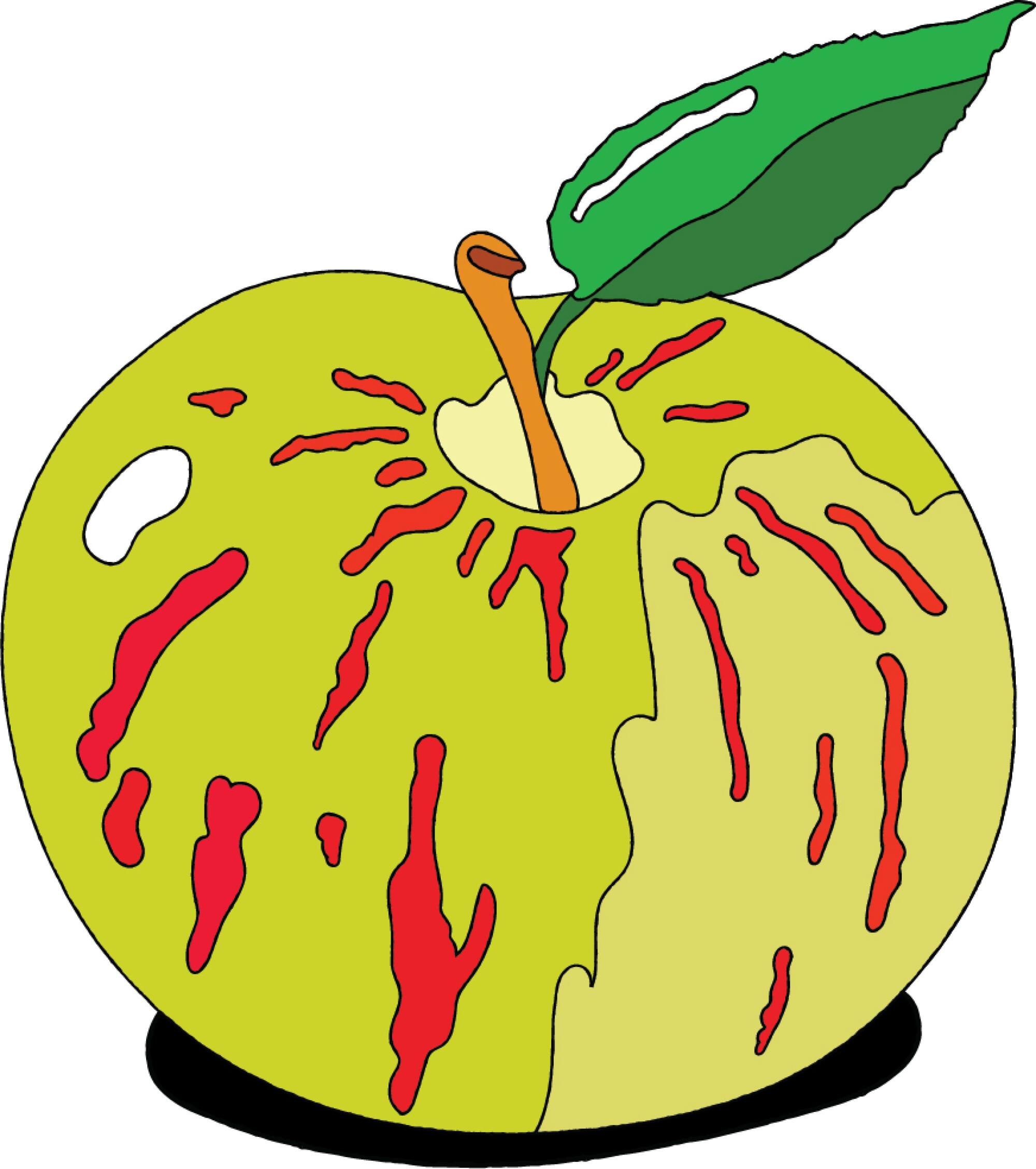
Inarguably, the restaurant Sqirl repopularized Gravenstein apples for many people in L.A., thanks to their use in Sqirl’s signature apple butter. In “The Sqirl Jam Book,” author Jessica Koslow writes that Gravensteins are the best because “they don’t have the fibrous toothiness of other apples so when making apple butter, they become almost silky, without being overcooked or caramelized you really taste the flavor of the fruit.”
Aside from texture, Karp agrees that Gravensteins are the best for making apple butter because they possess all the best qualities that you want in any fruit you’re going to turn into a sweet preserve — namely, lots of acidity.
Why turning to the oven makes cooking pulpy apple puree easier and more stress-free.
“The four prime elements of high flavor are sweetness, acidity, aromatics and tannins,” said Karp. “If you make apple butter from apples that are mostly sweet like Fuji, you’ll have to add acidity or the end result will be insipid. The most important thing to me is the intensity of flavor of the [Gravensteins], which carries over into the butter made from them.”
But if you can’t find Gravenstein apples this year (it will be tough because they are harvested in August), rest assured that you can make apple butter with virtually any apple that is really tart and has a fragrant aroma that you love. One of the most common varieties you can find in grocery stores is the Pink Lady, which Karp also supports as a great apple butter fruit.
Apple butter is a smooth puree of fruit — rather than chunks — and must be approached differently than jam.
“Probably the best apple variety commercially grown and readily available in Southern California is Cripps Pink, most often marketed as Pink Lady,” said Karp. “It reaches perfection in Cuyama, a remote valley north of Ojai, where the climate resembles its native Western Australia. It abounds in both tartness and sweetness, although it’s not quite as aromatic as the finest heirlooms.”
Ultimately the best apple to use? The one whose flavor you like the most. Talk to vendors at your farmers market — Cuyama Orchards, Fair Hills Farms and See Canyon Fruit Ranch are ones to look out for in L.A. right now — and tell them you’re making apple butter and then ask which varieties they’d choose.
You want an apple that is intensely flavored raw so when it’s cooked down with sugar into a delicious apple butter, that flavor will be even more pronounced and striking. Once you taste your homemade apple butter with your favorite fruit, you’ll understand why other fall flavors will always come in second place.
Master Apple Butter
More to Read
Eat your way across L.A.
Get our weekly Tasting Notes newsletter for reviews, news and more.
You may occasionally receive promotional content from the Los Angeles Times.
